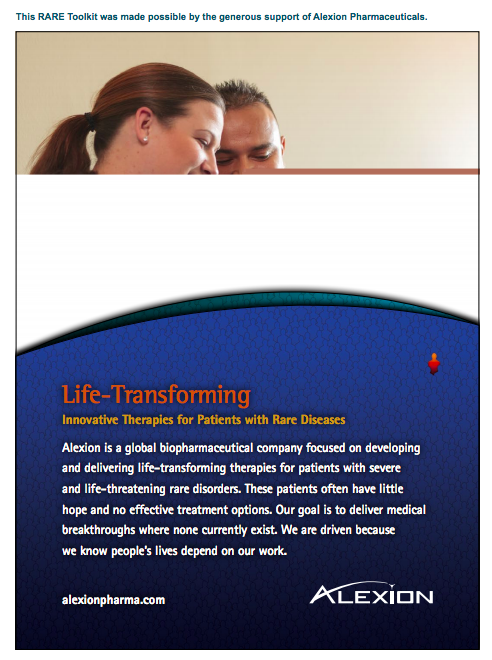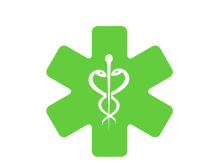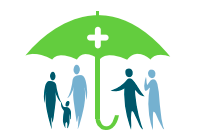

Introduction
Becoming an adult is often marked by changes and challenges. Teens with rare or undiagnosed diseases know this all too well. And although they may know a lot about their conditions, many struggle with moving towards greater independence.This toolkit will support rare disease families and their children who are approaching adulthood by covering the steps they should take to become more independent, strong, and proactive individuals.
SECTION 1: BECOMING A YOUNG ADULT 
Early adulthood (ages 15 to 26) is a time of discovering what it means to be independent, exploring different educational and career pursuits, traveling, forming relationships, and taking more responsibility for one’s own health. Young adults with rare or undiagnosed conditions may yearn for a sense of independence, but feel anxious about what the future will hold.
Building Self-Confidence
Between managing their condition, frequent hospitalizations, fatigue, or disease flares, it is not uncommon for young adults with a rare disease to struggle with self-esteem or worry about how others perceive them, especially when they see their friends or siblings moving at a different pace.
“[My daughter] Anna is about to graduate high school, but her biggest challenge with becoming an adult is having people recognize her as one. She is petite, due to the lysosomal storage disease she has, and it is easy for people to believe she is only 12 or 13 years old,” says Jackie James, parent of a child with mucolipidosis type III. “She tolerates it well, but I know it frustrates and even embarrasses her a little.”
Cultivating a strong sense of self-confidence will help foster an even stronger sense of humor and resilience. There are plenty of ways to bolster a strong sense of self-confidence, including:
• Connecting with Others Like You: Joining a support group, either online or in person, can be liberating. It is an avenue to reach others, learn best practices, and share stories. Knowing that others go through similar struggles can be encouraging. To learn more about the value of other patient advocates and resources to help find patient advocacy organizations, visit the Parenting a Child with a Life-Limiting Illness Toolkit (http://globalgenes.org/toolkits/parenting-achild-with-life-limiting-illness/introduction/).
• Developing an Elevator Pitch: Many young adults get tongue-tied when it comes to sharing their story with others. A muddled explanation about symptoms or medical equipment can lead to more confusion. By developing a brief explanation of the disease ahead of time, young adults will feel more confident when approached by others who are unfamiliar with their condition. Unsure of what to include in an elevator pitch? Let’s Feel Better (http://letsfeelbetter.com/ the-elevator-pitch-how-to-quickly-explainyour-disease-published-in-this-months-igliving/), a rare disease patient blog, offers different tips for explaining a disease quickly and easily.
• Honing an Identity Outside a Diagnosis: Although it may feel like an all-consuming part of a young person’s life, it’s important to remember you are not your disease. Try to find other interests and pursuits in life: a career, cooking classes, a sports team, and neglected talents. Find what makes you happy. Don’t know where to start? Buzzle has a list of hobbies broken down by category (http://www.buzzle.com/articles/list-ofhobbies-interests.html).
Managing Treatment and Coping with Disease
Achieving good health and well-being can take some effort, and those with rare and undiagnosed conditions may feel encumbered by their symptoms.
“It’s hard enough being healthy and transitioning to adulthood, but now you add in a rare disease or any illness and it turns into a whole new ballgame,” says Kathi Kayo, Founder of The IHope Foundation. “It feels like it takes twice the effort to get anything done, but I’m doing my best.”
By being proactive and learning important selfcare techniques, you may feel more comfortable with this transition process too. Some examples of these techniques include:
• Asking questions about medications, such as, What are the side effects? What is the correct dosage? Will other medications interfere with this one?
• Learning to book appointments regularly and on time to avoid emergencies
• Being aware of the number of medications left and picking up refills before they run out
• Keeping up to date on new treatments, and reading reviews and comments from other patients
• Keeping track of medical records, including exam reports, test results, medication lists, and allergies. See Becoming an Empowered Patient: A Toolkit for the Undiagnosed (http://globalgenes.org/toolkits/ becoming-an-empowered-patient-a-toolkitfor-the-undiagnosed/introduction-2/) for more information about managing medical records.
Having a rare disease can be limiting, and young adults may want to adopt practices to cope with problems and concerns related to their illness.
“It’s important to cope. For me, coping was found in writing. It might take some time to find what works best for you, but there’s something out there,” says Alyssa Zeigler, board member of Hereditary Colon Cancer Foundation. “Don’t be afraid to tell people about your disease. Having someone to talk to about whatever emotions I felt about having my disease was better than keeping my feelings to myself.”
Some recommended coping strategies include:
• Talking to friends • Participating in support groups • Seeking out therapists who specialize in chronic illness
• Keeping a record of symptoms, possible triggers, and their levels of severity. Find additional information and tools for creating your own care notebook in the Becoming an Empowered Patient: A Toolkit for the Undiagnosed (http://globalgenes.org/ toolkits/becoming-an-empowered-patient-atoolkit-for-the-undiagnosed/introduction-2/).
• Bringing any concerns to a doctor and talking through new treatments and solutions.
SECTION 2: RECEIVING MEDICAL CARE 
Most medical institutions have policies regarding when young adults should begin their transition to adult-oriented primary care doctors and specialists. The patient may be 16, 18, 21, or 25 when the shift occurs, and young adults should ask the current healthcare team how the transition process is handled.
Evaluating Current Care
As children become adults, their healthcare needs change and it is important to have doctors who know how to keep their patients healthy as adults. But before they make the transition to adult-oriented primary care, there are questions they should ask themselves to evaluate their existing healthcare teams, including:
• Does my disease feel like it is under control? How often are my symptoms bothering me? Consider how often there are “bad days” when symptoms feel unmanageable. Patients who feel like they are not getting the answers or tools they need may want to consult another adult-oriented physician.
• Am I comfortable on the medications I’m taking? Do I feel comfortable talking to my doctor about changing them? Not all medications are easy to metabolize. Some may cause severe side effects that can last hours, days, or even weeks. If medications are not working and the doctor seems unwilling to help find other solutions, it may be time to seek a second opinion. For some rare conditions, treatment options may be limited, but changing dose timing, diet, or using relaxation techniques may help.
• Is the doctor listening? This is an important question. Having an open line of communication between the doctor and patient means feeling comfortable with discussing symptoms and speaking up about concerns. Practice speaking with your provider yourself (and alone) rather than letting a parent do it for you.
• Is the doctor available during emergencies, or is there another physician in the practice on-call? Many doctors have too many patients to care for all at once, so they enlarge their practice to include other doctors who can help carry the load. It’s important for a patient to confer with all of the doctors in the practice so that they are familiar with the case.
• Is the doctor knowledgeable about my specific condition? If not, is he willing to reach out to other specialists for guidance? It’s great to have doctors you like and respect, but if they are unfamiliar with the disease or unwilling to reach out to other specialists for guidance, consider looking for an alternative.
Questions to Ask a New Doctor
Just as it is wise to evaluate the existing medical team before transitioning to a new one, it is equally important to assess alternative options before selecting them. Here are some questions to ask the new physician or specialist.
• Are you familiar with this condition? How many patients do you treat with it?
Remember, not all doctors will have experience with every rare disease. It’s great to find doctors who already have similar patients, but as long as they are willing to learn about the condition, you should be in capable hands.
• How many years have you been in practice?
Patients may prefer to have a physician who has been in the field for several years over one who recently graduated medical school.
• What hospital are you affiliated with? In an emergency, who will guide treatment?
Doctors may be affiliated with different hospitals, meaning they have access to different diagnostic tools and can direct treatment. If a doctor has privileges at the hospital their patients usually use, he or she will be able to see and treat them while they are there.
• Does the doctor accept my insurance? Are the services, tests, and exams performed in the office covered by my co-pay?
This is also a question to ask the appointment or registration staff. More information on this can be found within.
Section 3: UNDERSTANDING HEALTH INSURANCE 
For some treatments, the pharmaceutical company making the drug can help with insurance issues as well.
• Do you have malpractice insurance?
Not all doctors carry malpractice insurance. Look into the doctor’s past history to see if there have been any malpractice lawsuits.
• Will you work with other specialists to help coordinate my treatment?
Thanks to new technology, it’s easier for doctors to communicate with each other. Electronic medical records offer virtual records, patient notes, and test results, many with online portals for patients. Read more on how to speak to doctors and prepare for appointments in the Becoming an Empowered Patient: A Toolkit for the Undiagnosed (http://globalgenes.org/toolkits/ becoming-an-empowered-patient-a-toolkit-forthe-undiagnosed/introduction-2/).
Finding New Primary Care Physicians and Specialists
Sometimes it can be challenging for people with a rare disease to find new primary care physicians or specialists. Kendall Gagliano, who has intracranial hypertension, has had that problem. Her pediatrician typically only sees patients until they are 16, but agreed to continue seeing Kendall beyond that point.
“Due to my rare case, my pediatrician knew that I would have trouble finding a doctor, so she was willing to treat me for an extra two years. And unfortunately her fears have come true because finding an adult primary care physician has proved to be a challenge,” says Kendall Gagliano, a volunteer for The IHope Foundation. “I think when you have a rare disease like I do, it can be hard for doctors to understand what we are going through. I have had a lot of bad experiences with past doctors.”
Whether insurance is provided by an employer, educational institution, or a parent’s plan, it will dictate which primary care physicians and specialists are available. Keep this in mind when trying to find a new doctor. Here are a few steps to take when finding a doctor:
• Obtain a list of primary care physicians and specialists from your company, insurance plan, or current doctor. These lists can generally be found on insurance plan websites. Before selecting any physicians from the list, be sure they are in practice and accepting new patients.
• Connect with patient advocacy organizations that focus on your rare disease. Other patients can provide support and information on adult oriented physicians that have helped them, recommendations they have received from their pediatric specialists, and their research.
• Read the physicians’ online bio, usually available on the website of their current academic appointment or medical center. Research the doctor’s board certification, training background, experience, and most recent research endeavors.
• Visit a peer review website, such as Vitals (http://www.vitals.com), and search for each physician being considered, read their ratings, and learn what other patients have experienced.
Additional resources to locate physicians and specialists near you can be found through the Center for Advancing Health’s Be a Prepared Patient (http://www.cfah.org/preparedpatient/find-good-health-care/finding-a-newdoctor). After selecting a physician, send an introductory letter, call and alert the doctor’s office that the letter is coming, and ask to have the physician or office manager call once it has been received. If the phone call or first visit does not go well, keep looking to find the right fit—as long as there is no medical crisis or need for prescription refills.
As a member of the rare disease community—and even if you are not—it is important to understand health insurance even though it can be a complicated and challenging subject.
Health Insurance 101
Health insurance is a way to pay for healthcare. If the policyholder (the patient, patient’s parents, or a caregiver) pays the premiums, then the insurance company (such as Aetna, Blue Shield, UnitedHealthcare, etc.) will cover many of the costs associated with your health needs. Think of premiums as one of the costs of having a plan. This amount is paid regularly (bi-weekly, monthly, quarterly, annually) by the policyholder.
Insurance premiums, like most other medical expenses, are not tax deductible until they exceed 7.5 percent of a person’s income. However, if self-employed or using a flexible spending account, a tax break can be given without reaching that threshold.
But remember: When considering plans, the lowest premium isn’t always the cheapest plan. What the insurance covers is just as important as, and sometimes more important than, what is paid up front and the cheapest plan is the one with the best price for the benefits you are most likely to use.
In addition to premiums, there are other commonly used insurance terms that represent additional costs to the policy holders, like deductible, co-payment, and co-insurance. Read helpful definitions of these and other terms through Healthcare.gov’s Coverage to Care: A Roadmap to Better Care and a Healthier You (http://marketplace.cms.gov/help-us/c2croadmap.pdf) and UnitedHealthcare’s Health Insurance 101 Glossary (https://www.uhcsr. com/SelfServiceSupport/Students/HealthInsurance101/glossary.aspx).
Want more information on Health Insurance 101? Watch the RARE Webinar series on Navigating Health Insurance Issues (http:// globalgenes.org/webinars) for additional information on this topic.
Types of Insurance
There are two different types of health insurance: public and private. Public insurance is provided by the government and includes Medicare (for those 65 or older or with disabilities) and Medicaid (for those with low income). Learn more about Medicare, Medicaid, Supplemental Security Income (SSI), and Disability in the Parenting a Child with a Life-Limiting Illness Toolkit (http://globalgenes.org/toolkits/ parenting-a-child-with-life-limiting-illness/introduction/).
Private insurance is insurance offered by for profit companies. Private insurance is offered through employer-based plans, healthcare. gov for those individuals who need to purchase private insurance when employer based insurance is not available, and directly from private insurance brokers. If an employer offers insurance, consider using it. Group coverage, particularly when it’s employer-subsidized, is almost always a better deal than anything obtained independently.
Young adults covered under a private plan through a parent’s employer can now remain on that plan until age 26, whether or not they are a student, live at home, or are married. Many young adults with rare conditions may need more time to complete school and start jobs with their own coverage, so this extension of dependent coverage is helpful. Parents should check with their insurance, as they may need to complete additional paperwork to maintain this coverage.
Young adults who are not covered through an employer or parent’s employer, but do not qualify for Medicaid in their state, are now able to purchase insurance through a state or federal “marketplace.” They can start this process at Healthcare.gov (https://www.healthcare.gov/ marketplace/b/welcome/). There are specific times for open enrollment, but it may be possible to take advantage of special enrollment based on certain life events, like losing a job, getting married, or turning 26. Young adults can find assistance online from a local agency, a hospital navigator, a social worker who is part of the healthcare team. If enrolled in an institution for higher learning, you may use the student insurance offered.
Employees who lose their job at a company with 20 or more employees under the federal law called the Consolidated Omnibus Budget Reconciliation Act, or COBRA, can remain on the ex-employer’s group policy for typically 1836 months, along with their partners, dependents, and adult children under 26. However, they will now be responsible for covering the full premium, and this will be more than the cost the employee had previously been paying. Enrollment in COBRA must be done within 60 days after the job loss.
If possible, a young adult may want to maintain COBRA until they find more affordable insurance elsewhere. For more details on COBRA, visit the United States Department of Labor Website (http://www.dol.gov/dol/topic/healthplans/cobra.htm).
Comparing Insurance Plans
Benefits and costs vary widely from plan to plan, so if choices are available, examine each one carefully to identify the most appropriate one based on its coverage, premium rate, co-insurance and co-pay costs, drugs included in the formulary, and physicians and hospitals available in-network. Use Seattle Children’s Hospital’s Center for Children with Special Needs’ Health Insurance Chart (http://cshcn. org/sites/default/files/webfm/file/TeenHealthInsuranceChart.pdf) to fill out information and compare plans more easily. Keep in mind that dental and vision insurance may be included within the plan, or they can be separate policies.
Insurance may be expensive, but having none can be even more expensive. There are sensible ways to save money on insurance, but skipping coverage is not one of them. Medical bills from even a minor car accident can deplete savings, while those from a major illness, such as a rare disease, can push one into bankruptcy.
It is important for young adults to investigate their current insurance and if it might end. It may end when the young adult turns a certain age (if on a parent’s plan), if they are no longer a student (if using a college-based plan), or when they change jobs.
It is also important to understand that individuals with a rare disease cannot be denied health coverage because of their illness or any other pre-existing condition. This does not mean, however, that an insurance policy will cover particular providers or treatments. You may need to document your needs and fight for coverage for certain treatments or care from certain specialists.
It is also important for patients to understand what their plan covers and what it does not. Here are some questions to ask yourself when reviewing insurance plans:
• Are my physicians in-network?
Using out-of-network providers costs more, and usually these costs do not apply to the maximum annual out-of-pocket expenditures (i.e. the deductible). However, seeing an out-of-network provider can be necessary due to travel, a plan’s limited network, or the special needs of a patient that can only be met by specific specialists who are out-of-network. It is important to recognize these costs and be prepared to cover them when adequate physicians are not available in-network.
Insider Tip: “Exceptions can sometimes be made so that patients can see out-of-network providers at an in-network rate. This occurs in special cases when the insurance company agrees that it is a vital medical necessity for a patient to go out-of-network,” says Julie Raskin, Executive Director of Congenital Hyperinsulinism International. “You can try and set up this kind of arrangement by first connecting with the physicians or specialists who will be providing the care. In many cases they will write a letter of medical necessity, and these efforts can be supported by the staff of the patient advocacy organization for your rare disease.”
• Are out-of-network benefits available?
Some benefit plans cover services received from out-of-network providers; others do not. For instance, many HMOs, or health maintenance organizations, that provide or arrange managed care for health insurance, do not reimburse out-of-network providers at all. This means that the patient is responsible for the full amount charged by the doctor.
• Is a primary care doctor needed, and are referrals needed to see a specialist?
A requirement for those with HMO plans, referrals help primary care doctors keep track of the care their patients receive. Most plans now expect patients to have a primary care doctor who will help coordinate the rest of the patient’s care (this may have been a pediatrician when a patient was younger). For some patients with rare diseases, however, they may rely on a specialist’s expertise to do this.
• Are your rare disease specific needs being met by the plan?
For patients with rare diseases, determining coverage needs can be tricky. Make sure to read the insurance policy carefully and see what restrictions, limitations, and benefits are offered. Some plans will assign a case manager to those with complex health conditions, to help coordinate care and keep costs down.
• What is the co-pay?
A co–payment (or co-pay) is the fixed amount paid every time a patient visits a doctor, laboratory, ambulatory care center, hospital, physical therapist, emergency room, pharmacy, or other healthcare professional. These are usually higher for specialists than primary care physicians, and the amount varies depending on the insurance plan.
Once an insurance plan has been selected, make sure to keep a copy of the insurance card at all times. It will be needed for doctor visits or emergencies. The cards also have phone numbers on them that can be useful when policy-related questions arise. Patients denied coverage for a needed therapy, treatment, or resource should not take “no” for an answer. They should ask for the exact reason for the denial, collect all documentation that explains the need for treatment, and consult their insurance policy for the proper appeals process. Watch the RARE Webinar series on Navigating Health Insurance Issues (http://globalgenes.org/webinars) for additional information on this topic.
SECTION 4: INDEPENDENT LIVING 
The everyday tasks of independent living can present unique challenges for people managing a rare disease, but with sufficient assistance and social supports in place, they can enjoy many opportunities and liberties in their everyday lives. Before making any arrangements to move out, however, consider whether moving out is the right choice.
Deciding to Move Out
There are a myriad of reasons why someone can’t or shouldn’t move out of their family home when they have a chronic or debilitating illness. But for many young adults, the need for independence outweighs many of the obstacles and responsibilities that come with having their own space.
“Being independent doesn’t mean breaking connections with your family and others that have supported you when you were younger,” says Maya Doyle, a senior social worker at the Children’s Hospital at Montefiore. “In fact, knowing how and when to ask for help is as important as knowing how to handle things yourself.”
When deciding whether it is time to move out of the family home and into a new residence (an apartment, a college dorm, or a house), consider the following questions:
• Can I handle the day-to-day management of my disease?
Rare diseases, like other illnesses, can have multiple symptoms that are often difficult to manage independently. They can fluctuate or grow worse. Weigh if the prognosis is favorable, if the symptoms are manageable, and if resources and support are available at the new residence when deciding to move out.
• Can I afford to pay my rent, utilities, and general costs of living?
Before moving out on your own, calculate the costs to make sure you can afford the monthly expenses. If you are unable to cover these on your own, review your options (if your family can help, if you can get a roommate, etc.) and see if moving out is still within reach. Use Kiplinger’s Household Budget Worksheet (http://www.kiplinger.com/tool/ spending/T007-S001-budgeting-worksheeta-household-budget-for-today-a/) to create a proposed budget.
• Do I have the phy

Stay Connected
Sign up for updates straight to your inbox.
